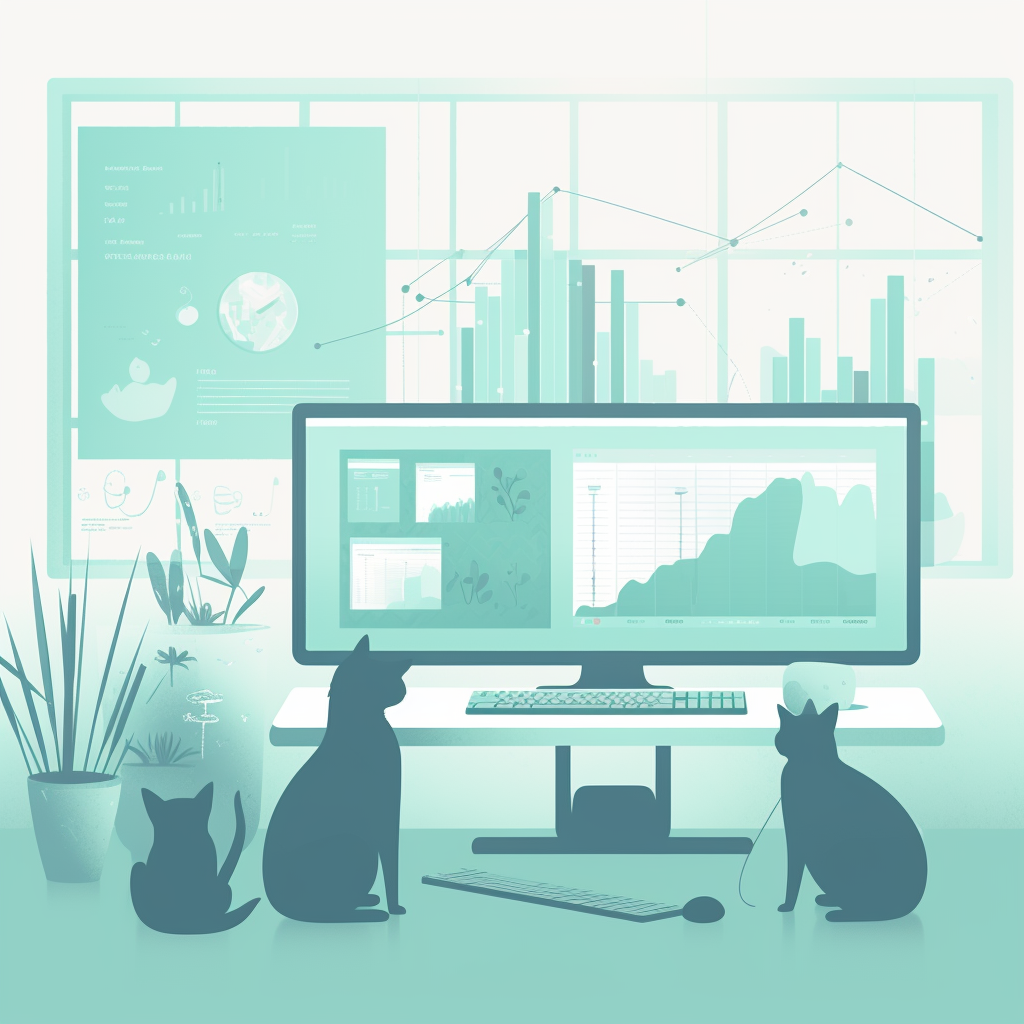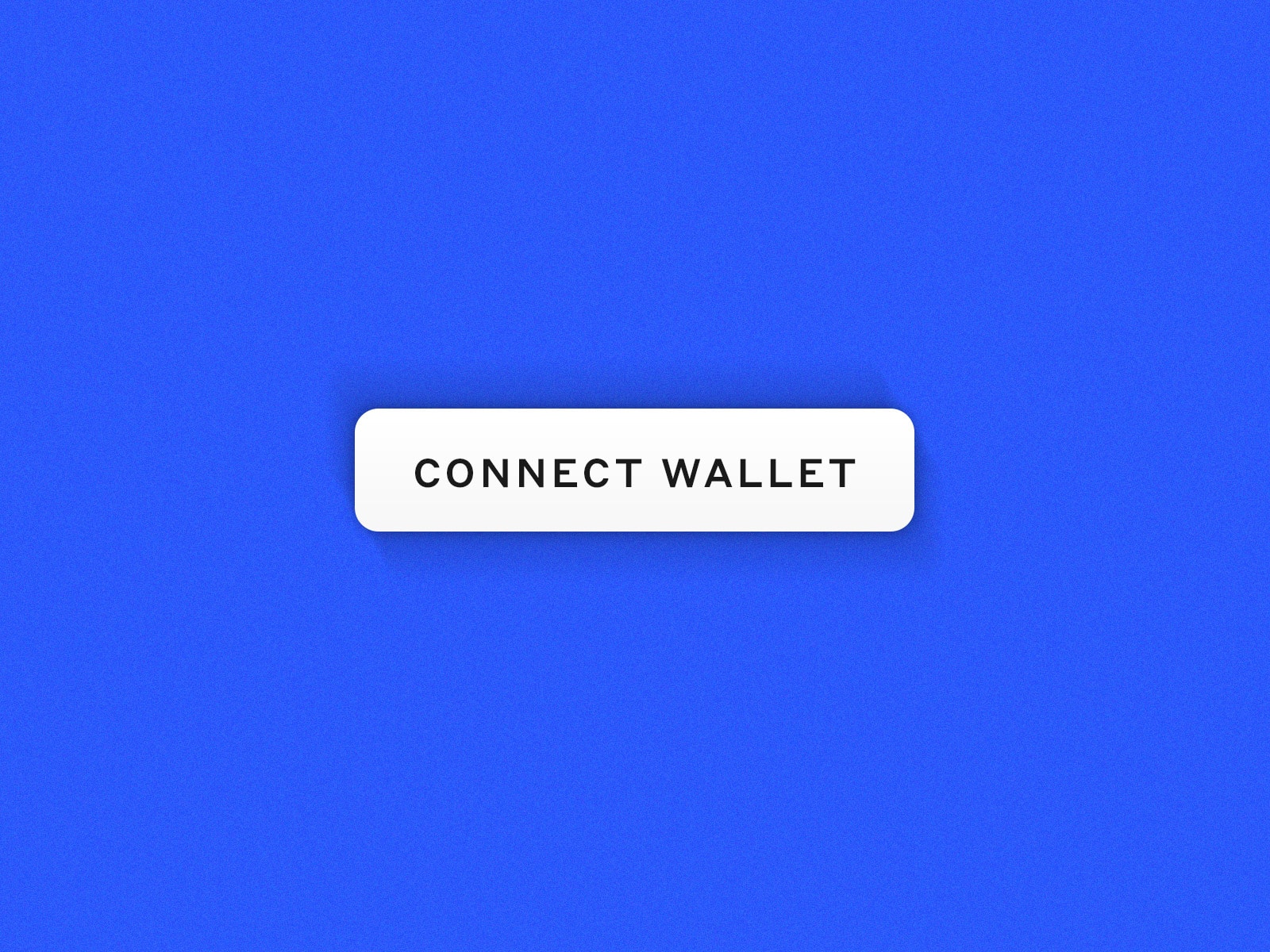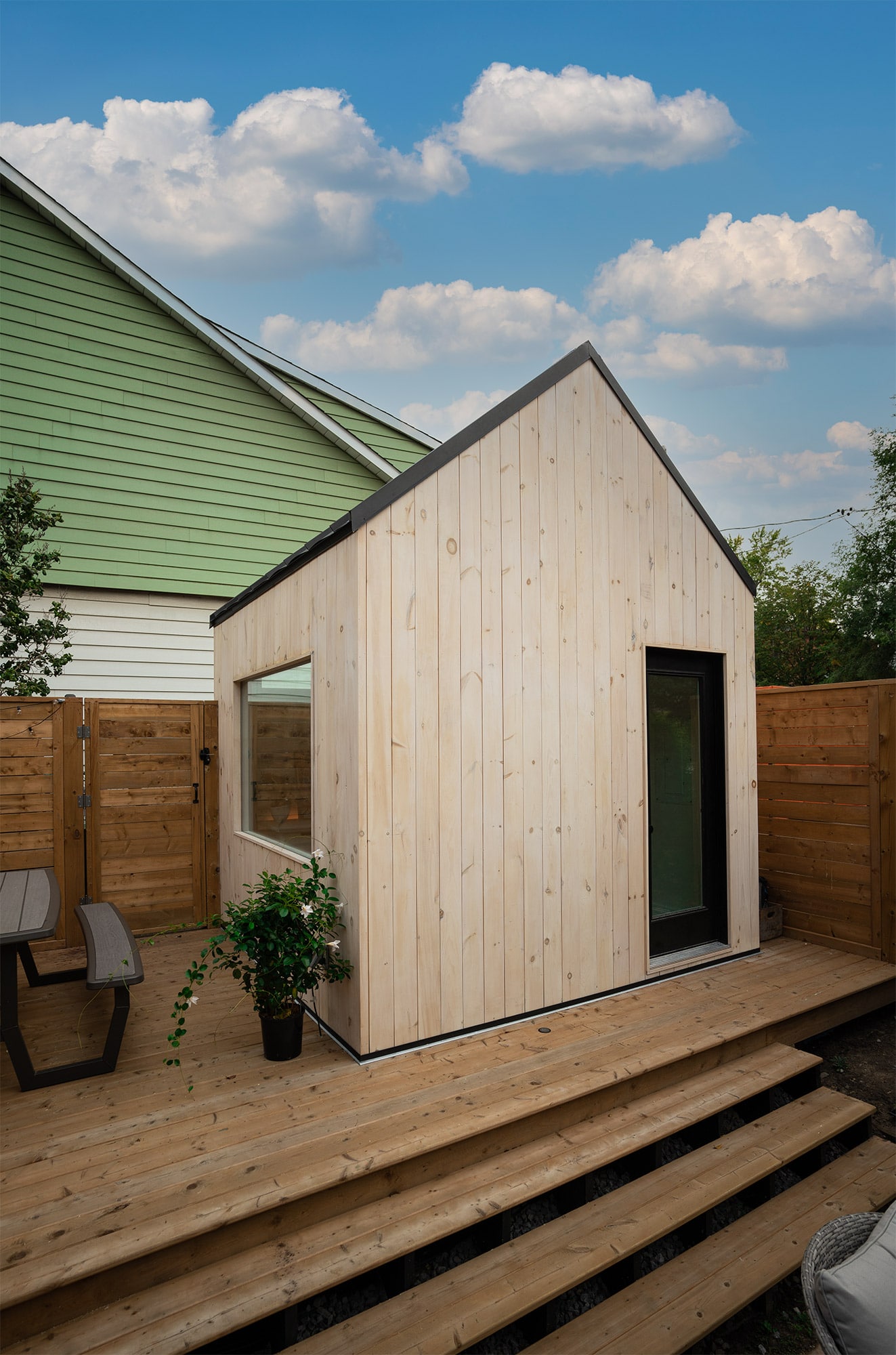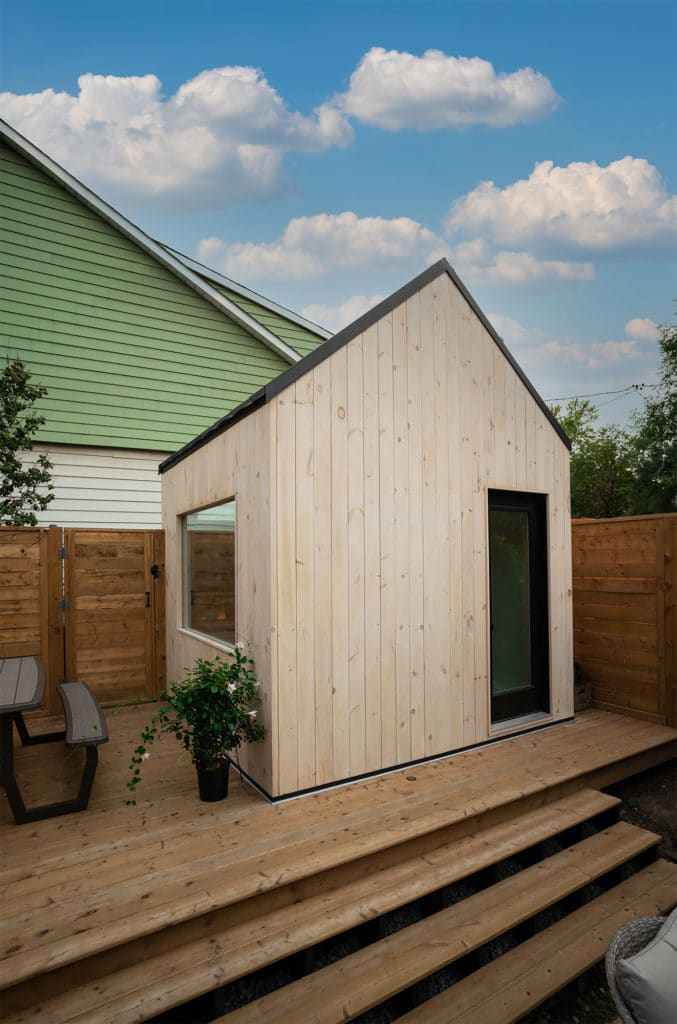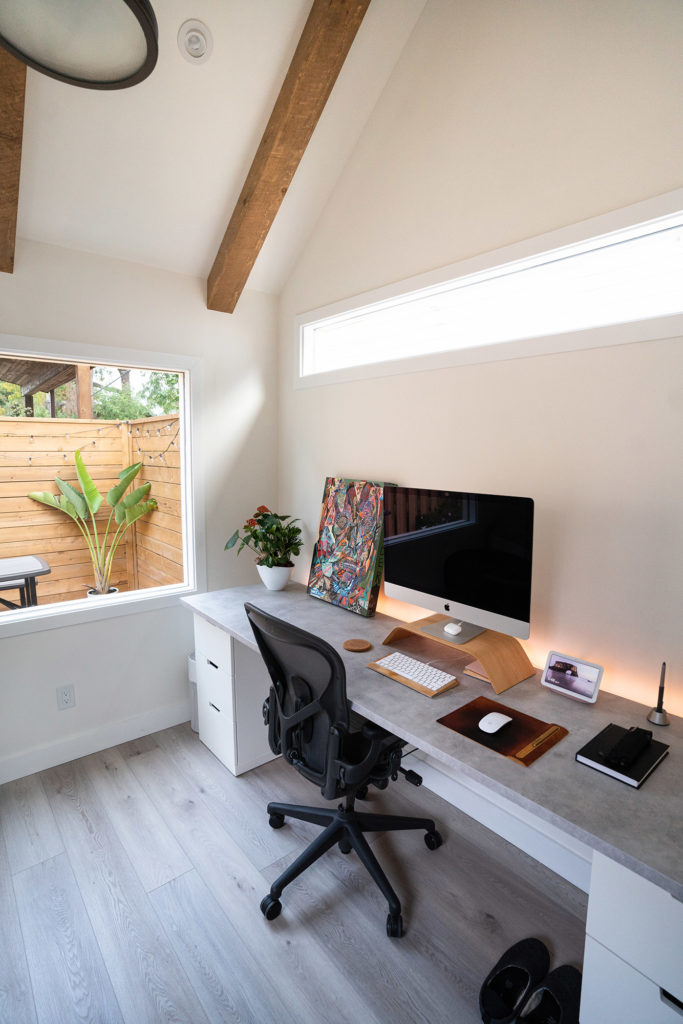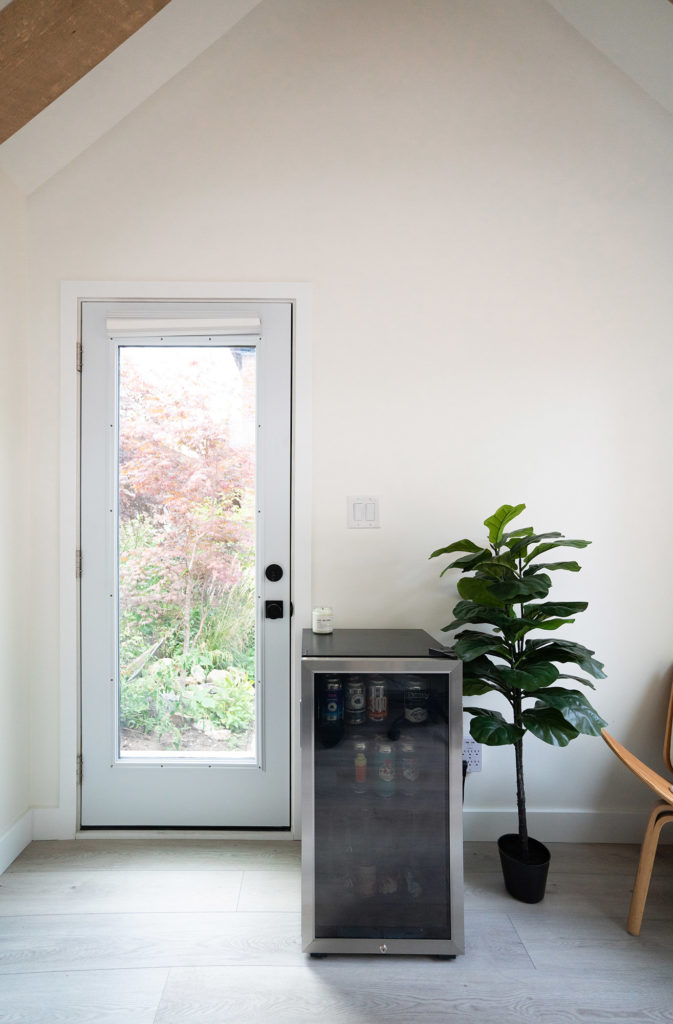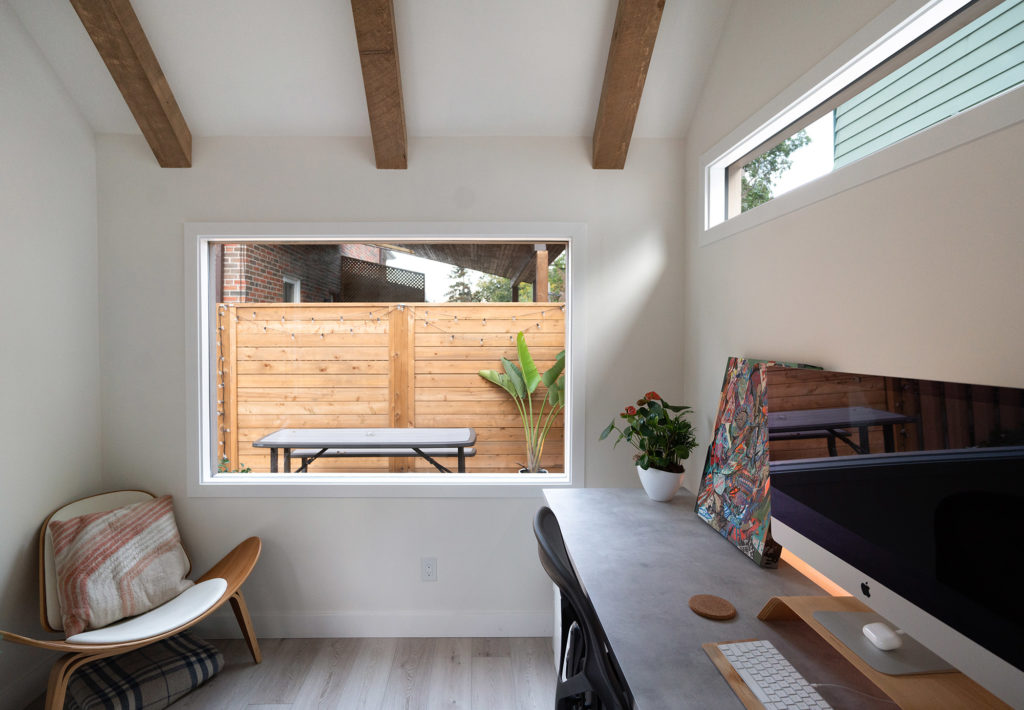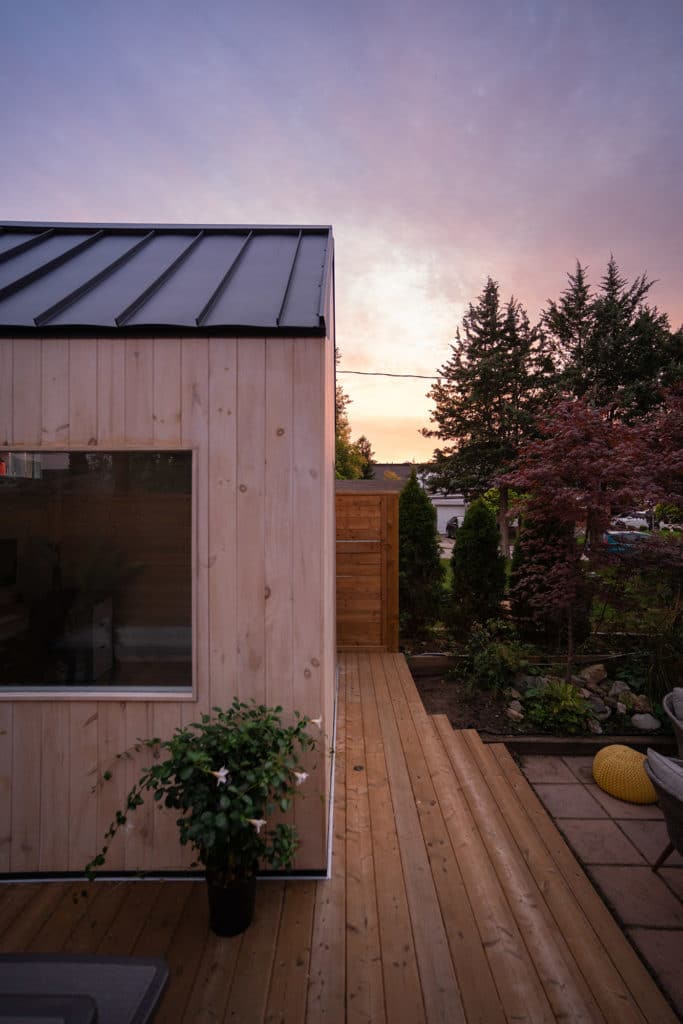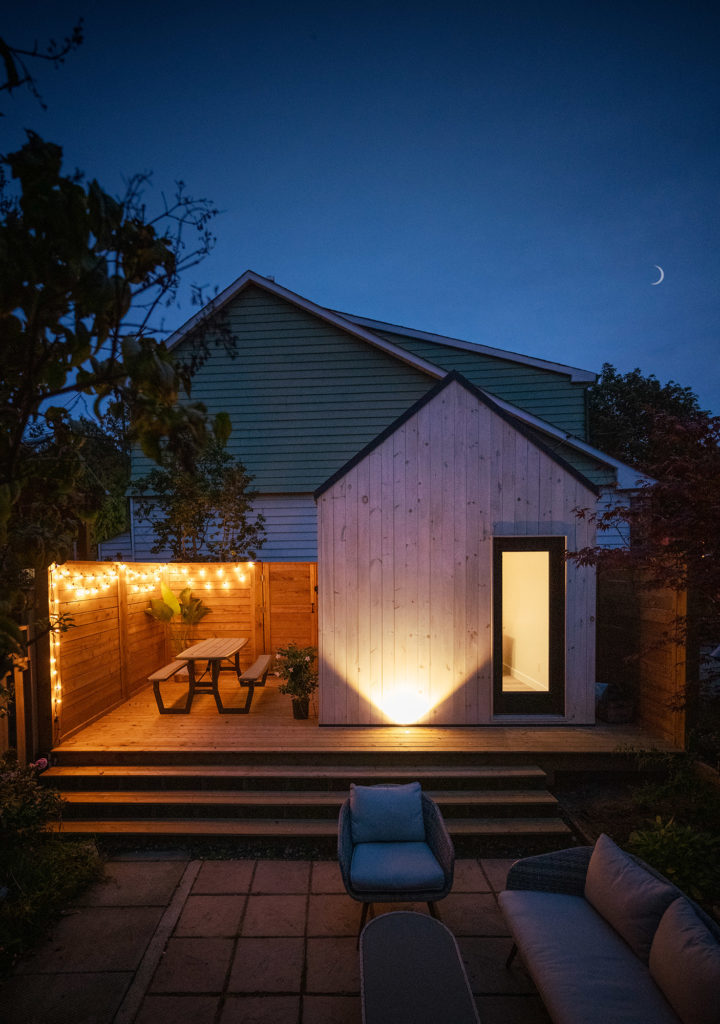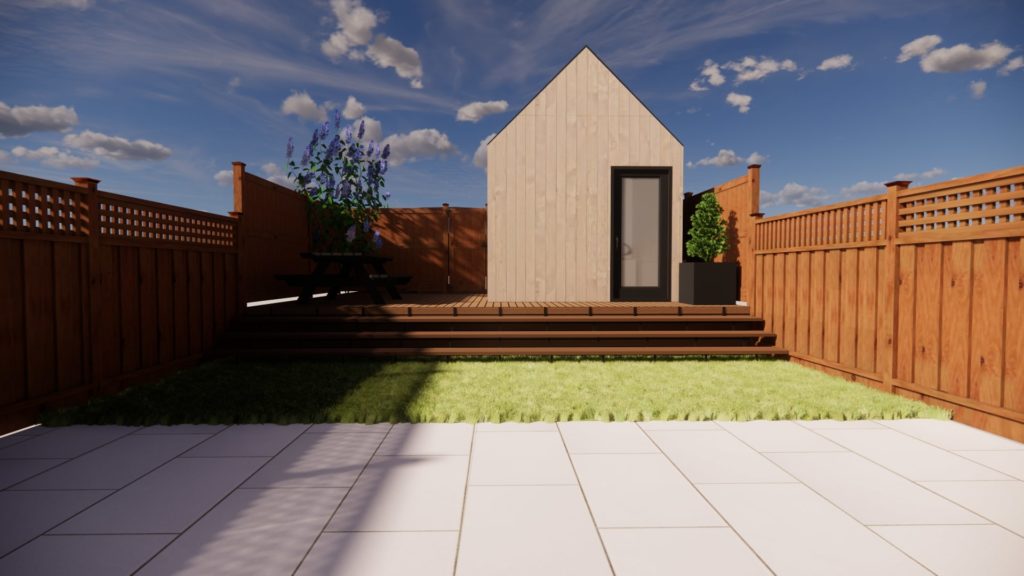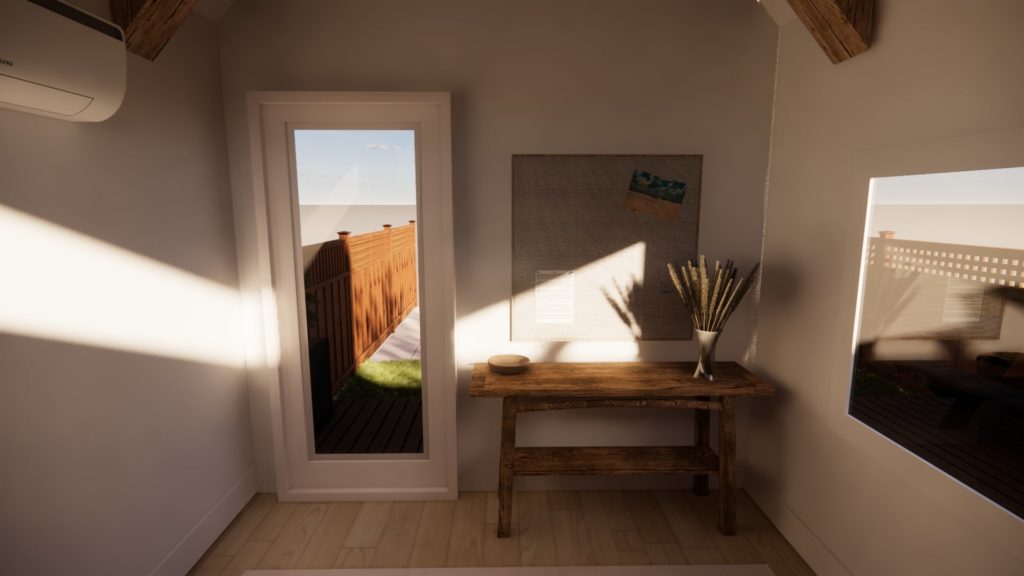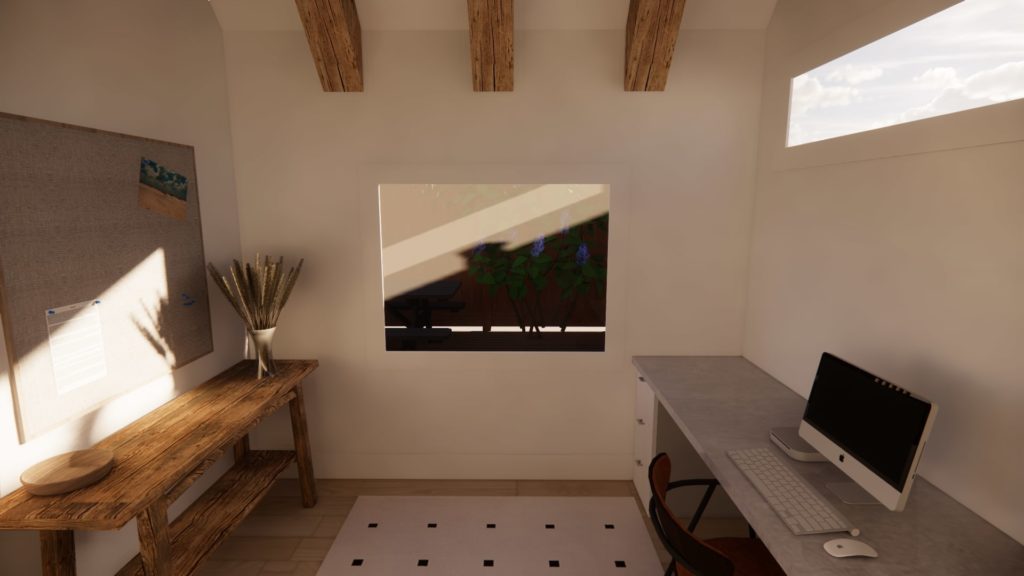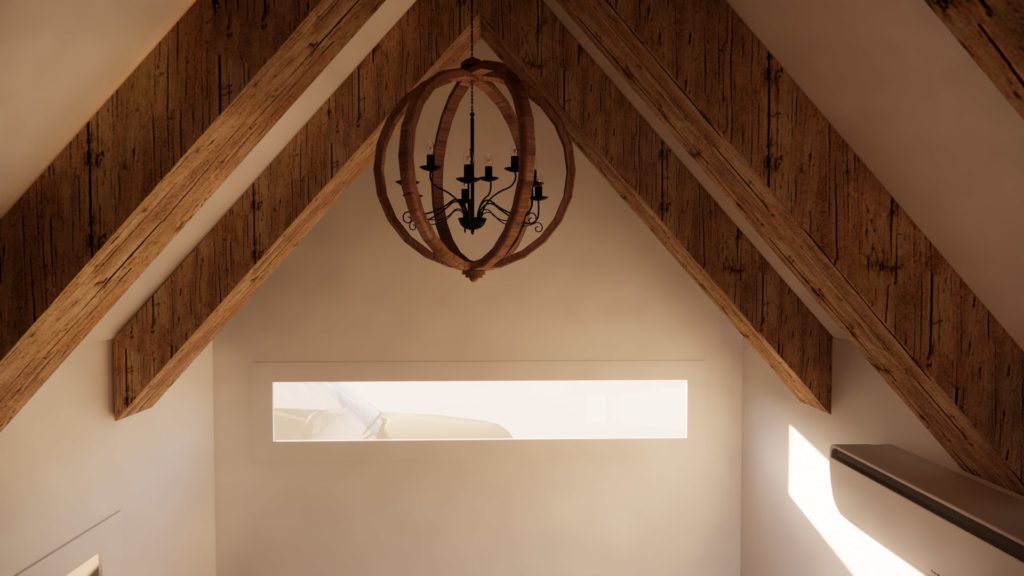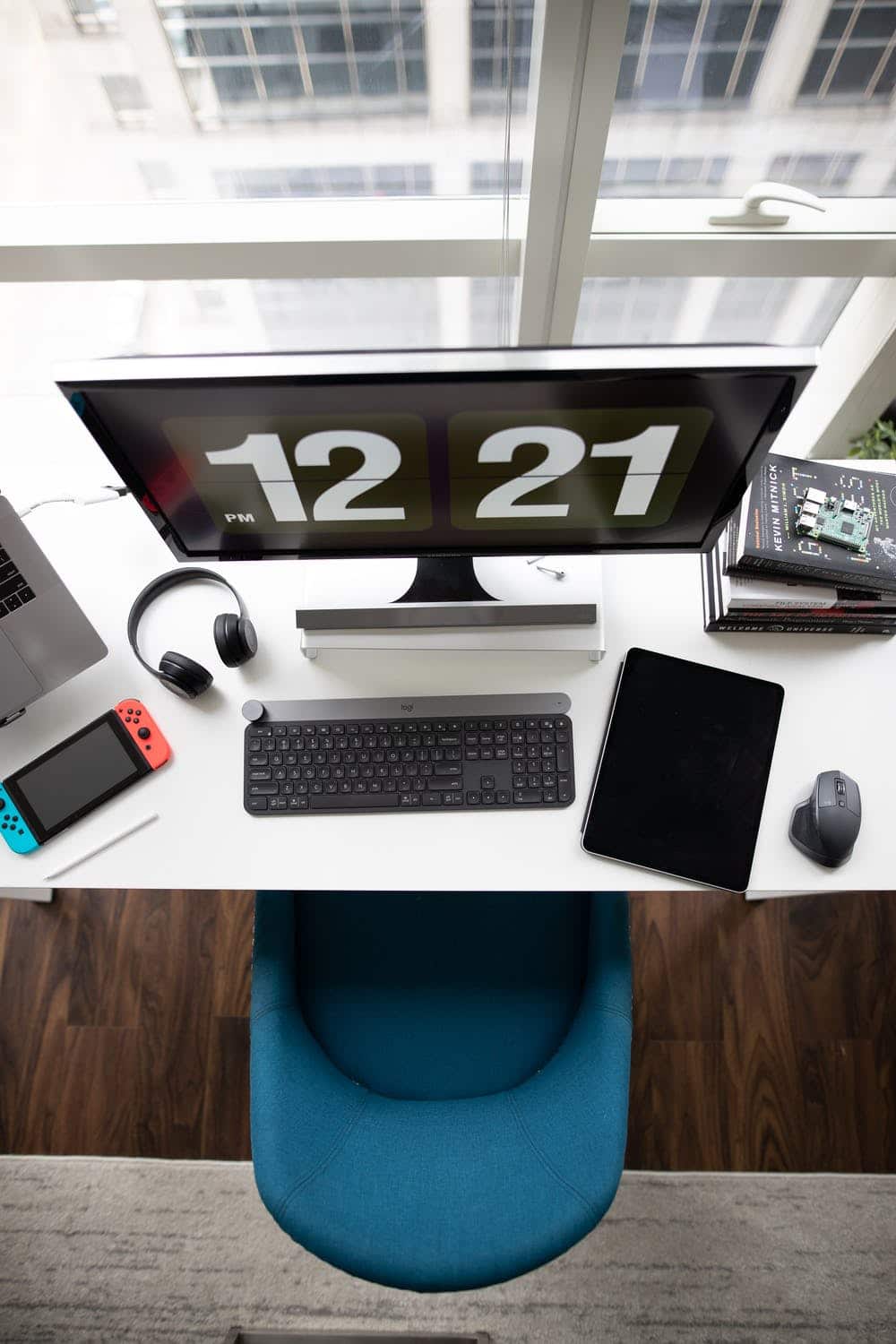In today’s fast-paced digital world, businesses need to engage their audience and create compelling content that drives sales and marketing success. With ChatGPT, an advanced language model, you have a powerful tool to spark your creativity and supercharge your content creation.
We’ve curated 500 ChatGPT prompts covering various topics for sales and marketing professionals. Whether you’re writing sales emails, social media posts, blog articles, or attention-grabbing headlines, this guide has what you need.
These prompts are designed to help you overcome writer’s block and generate impactful marketing materials. From ad copy to product descriptions, informative reports to video and podcast scripts, you’ll find plenty of inspiration to guide your content creation journey.
This article not only features 500 ChatGPT prompts but also incorporates previous outputs from various requests. You’ll discover prompts for blog posts, social media, courses, videos, podcasts, emails, and more. This variety allows you to adapt the prompts to your needs, target audience, and industry.
Whether you’re a marketer, content creator, or business owner, these ChatGPT prompts will fuel your creativity and help you deliver content that resonates with your audience. Let’s dive in and unlock the potential of ChatGPT to revolutionize your sales and marketing content creation. Use these prompts as a springboard to craft persuasive, engaging, and results-driven content that captivates your audience, converts prospects into customers, and drives your business growth and success.
Blog Post Creation
List of prompts you can use to create a blog post on any topic:
- “Provide an introduction to the topic of [your topic].”
- “What are the key points to cover in a blog post about [your topic]?”
- “Summarize the current research or trends on [your topic].”
- “Brainstorm potential subtopics or sections for a blog post on [your topic].”
- “Explain the importance of [your topic] to a non-expert audience.”
- “Craft a conclusion that summarizes the key takeaways about [your topic].”
- “Suggest some engaging questions to ask readers about [your topic].”
- “Provide a controversial viewpoint on [your topic] for discussion.”
- “Provide examples or case studies related to [your topic].”
- “Draft a few bullet points for [your topic] that can be expanded upon.”
- “Describe the historical context or background of [your topic].”
- “Provide a prediction or forecast related to [your topic] in the near future.”
- “Analyze the impact of [your topic] on society/economy/technology etc.”
- “Identify the key challenges related to [your topic] and potential solutions.”
- “Discuss the various perspectives or debates surrounding [your topic].”
- “Explain how [your topic] has evolved or changed over time.”
- “Describe the significance of recent developments in [your topic].”
- “Highlight some common misconceptions or myths about [your topic].”
- “Present a case for why readers should care about [your topic].”
- “Identify and explain the key industry leaders or figures related to [your topic].”
- “Describe how [your topic] intersects with other relevant fields or disciplines.”
- “Identify the most common mistakes or pitfalls related to [your topic].”
- “Summarize the most influential studies or findings on [your topic].”
- “Provide a step-by-step guide or tutorial on a specific aspect of [your topic].”
- “Discuss how [your topic] is perceived in different cultures or societies.”
- “Highlight the role of technology in [your topic].”
- “Compare and contrast different approaches or methods within [your topic].”
- “Explain the role of policy or legislation in [your topic].”
- “Discuss how [your topic] can influence personal growth or development.”
- “Describe a day in the life of a professional in [your topic] field.”
- “Discuss the role of ethics or morality in [your topic].”
- “Identify some interesting facts or trivia related to [your topic].”
- “Describe the potential future directions of [your topic].”
- “Analyze a popular piece of media (book, movie, TV show) that features [your topic].”
- “Highlight some unique or unexpected applications of [your topic].”
- “Discuss how [your topic] can be introduced or taught to beginners.”
- “Analyze the impact of a recent event or news story on [your topic].”
- “Discuss how [your topic] has been portrayed in the media.”
- “Identify some common misconceptions about [your topic] and debunk them.”
- “Provide a list of resources (books, websites, etc.) for readers to learn more about [your topic].”
Please note while these prompts can guide the creation of your blog post, your personal insight and expertise will be key to developing a meaningful and engaging piece of content. Always review and edit any information generated to ensure its accuracy and appropriateness for your audience.
Social Media Strategy & Content Creation
Prompts for creating content or strategy for social media posts on platforms like Facebook, Twitter, or LinkedIn:
- “Describe the key elements of an engaging post for [specific platform].”
- “Discuss the importance of visuals in a social media post for [specific platform].”
- “Explain the best practices for using hashtags on [specific platform].”
- “How can one effectively use a call-to-action in a post on [specific platform]?”
- “Identify strategies for increasing engagement on [specific platform] posts.”
- “Discuss how to use [specific platform] analytics to improve post performance.”
- “Describe the impact of timing and frequency of posts on [specific platform].”
- “Explain how to create a compelling profile or bio on [specific platform].”
- “What are some creative ways to use polls or quizzes on [specific platform]?”
- “How can user-generated content be leveraged on [specific platform]?”
- “Discuss the role of storytelling in a post on [specific platform].”
- “Describe how to address negative comments or feedback on [specific platform].”
- “Explain how to promote a blog post or article on [specific platform].”
- “What are some ways to use live videos or stories feature on [specific platform]?”
- “Discuss how to create a content calendar for [specific platform].”
- “Identify some do’s and don’ts when interacting with followers on [specific platform].”
- “How to effectively use emojis and GIFs in a post on [specific platform]?”
- “Discuss how to align your brand voice with your posts on [specific platform].”
- “Describe how to use [specific platform] for networking and building professional relationships.”
- “Discuss the importance of consistently providing value in posts on [specific platform].”
- “Explain how to use targeted ads effectively on [specific platform].”
- “Describe the role of influencers in promoting a brand on [specific platform].”
- “Discuss how to measure the ROI of social media campaigns on [specific platform].”
- “How can contests or giveaways boost engagement on [specific platform]?”
- “Discuss the value of user testimonials and reviews on [specific platform].”
- “How to handle a crisis or negative publicity on [specific platform]?”
- “Discuss strategies for maintaining a consistent brand image across all posts on [specific platform].”
- “Explain how to engage with other brands or influencers on [specific platform].”
- “Describe the process of audience segmentation on [specific platform].”
- “Discuss the role of SEO in optimizing posts on [specific platform].”
- “How to use [specific platform] features for market research and customer insights?”
- “Describe the benefits and challenges of sponsored posts on [specific platform].”
- “Discuss the impact of mobile optimization for posts on [specific platform].”
- “Explain how to utilize data privacy regulations when posting on [specific platform].”
- “Discuss the role of humor or memes in posts on [specific platform].”
- “Explain the impact of current events or trending topics on post engagement on [specific platform].”
- “Describe how to effectively use direct messaging for customer service on [specific platform].”
- “Discuss the strategy for launching a new product or service on [specific platform].”
- “How can personal stories or behind-the-scenes content enhance engagement on [specific platform]?”
- “Discuss how to use [specific platform] for recruiting or employer branding.”
Remember, each platform has its own unique features and user behavior, so it’s important to tailor your strategy and content accordingly. Also, keep in mind that the landscape of social media is always evolving, so staying up-to-date with the latest trends and best practices is crucial.
Creating a Course
Prompts that can guide you in researching and creating a course on any topic:
- “Describe the learning objectives for a course on [your topic].”
- “Identify the target audience for a course on [your topic].”
- “Discuss the prerequisite knowledge or skills required for a course on [your topic].”
- “How would you structure a syllabus for a course on [your topic]?”
- “Explain the key concepts and skills that should be covered in a course on [your topic].”
- “What teaching methodologies would be most effective for a course on [your topic]?”
- “Identify potential guest speakers or experts for a course on [your topic].”
- “Discuss ways to incorporate interactive elements in a course on [your topic].”
- “Describe the resources (books, software, tools) needed for a course on [your topic].”
- “How can assessments or quizzes be designed for a course on [your topic]?”
- “Explain how to accommodate different learning styles in a course on [your topic].”
- “Identify potential real-world projects or assignments for a course on [your topic].”
- “Discuss the role of feedback and revisions in a course on [your topic].”
- “How can online platforms be used to deliver a course on [your topic]?”
- “Discuss ways to keep learners engaged and motivated in a course on [your topic].”
- “Explain how to address common difficulties or misunderstandings in [your topic].”
- “Identify potential field trips or practical experiences for a course on [your topic].”
- “Discuss the role of self-study and homework in a course on [your topic].”
- “How to incorporate multimedia content (videos, podcasts, etc.) in a course on [your topic]?”
- “Discuss ways to ensure the course on [your topic] is inclusive and accessible to all learners.”
- “Explain the strategies for promoting and marketing a course on [your topic].”
- “Describe how to create a compelling course description and title for [your topic].”
- “What are some common misconceptions or hurdles in [your topic] that a course could address?”
- “How would you design the introductory module for a course on [your topic]?”
- “Discuss how to incorporate peer learning and collaboration in a course on [your topic].”
- “How can real-world case studies be included in a course on [your topic]?”
- “Discuss how to use feedback from previous courses to improve a course on [your topic].”
- “Identify potential supplemental materials (e.g., reading lists, online resources) for a course on [your topic].”
- “Describe how to build a community or forum for learners in a course on [your topic].”
- “How can you incorporate trends or recent developments into a course on [your topic]?”
- “Discuss how you can encourage critical thinking and problem-solving in a course on [your topic].”
- “Explain how to develop a robust grading and evaluation system for a course on [your topic].”
- “Describe strategies for handling a diverse group of learners in a course on [your topic].”
- “How can a course on [your topic] remain relevant and up-to-date over time?”
- “Discuss how you can balance theory and practical application in a course on [your topic].”
- “What ethical considerations should be taken into account when teaching a course on [your topic]?”
- “How can you create a safe and respectful learning environment in a course on [your topic]?”
- “Discuss how to handle learner inquiries and provide additional support in a course on [your topic].”
- “Explain how you can measure the success and impact of a course on [your topic].”
- “Describe how you can incorporate learning through play or gamification in a course on [your topic].”
These prompts should help you consider all the necessary elements when designing your course, from content and structure to teaching methods and learner engagement. Always keep your target audience in mind and adapt your approach to best meet their needs and learning preferences.
Crafting a Podcast Script
These prompts that can help guide you in creating a podcast on any topic:
- “How would you introduce a podcast episode about [your topic] in an engaging way?”
- “Write an outline for a podcast episode about [your topic].”
- “How would you conclude a podcast episode about [your topic] to encourage listeners to tune in to the next one?”
- “Draft potential interview questions for a guest who is an expert in [your topic].”
- “How can you promote listener engagement and interaction in a podcast about [your topic]?”
- “Describe a unique format for a podcast episode about [your topic].”
- “Create a catchy title and summary for a podcast episode about [your topic].”
- “How would you address listener feedback or questions in a podcast about [your topic]?”
- “Write a compelling teaser for the next podcast episode about [your topic].”
- “Discuss ways to incorporate storytelling in a podcast about [your topic].”
- “Describe how to create a balance between informative and entertaining content in a podcast about [your topic].”
- “How can you incorporate a call-to-action (like asking for reviews or sharing on social media) in a podcast about [your topic]?”
- “Plan an outline for a mini-series within a podcast about [your topic].”
- “Write an introduction script for a guest speaker in a podcast about [your topic].”
- “How would you handle controversial or sensitive aspects of [your topic] in your podcast?”
- “Discuss the role of sound effects and music in enhancing a podcast about [your topic].”
- “Create a script for a promo that could be used to advertise your podcast about [your topic].”
- “How would you approach discussing a common misconception about [your topic] in your podcast?”
- “Plan a listener Q&A segment for a podcast episode about [your topic].”
- “Discuss ways to effectively use humor in a podcast about [your topic].”
- “Write a script that addresses the most frequently asked questions about [your topic].”
- “Describe how you would tackle debunking myths about [your topic] in a podcast.”
- “How would you build anticipation for a major revelation or surprise in a podcast about [your topic]?”
- “Create a plan for a special edition or holiday-themed podcast episode about [your topic].”
- “How would you handle disagreements or debates in a podcast about [your topic]?”
- “Write a script that introduces a new segment or feature in your podcast about [your topic].”
- “How can you highlight listener contributions or feedback in a podcast about [your topic]?”
- “Describe how to provide value or actionable takeaways for listeners in a podcast about [your topic].”
- “How would you incorporate listener stories or experiences in a podcast about [your topic]?”
- “Discuss the role of guest speakers and how to select them for a podcast about [your topic].”
- “Describe how to incorporate current events or trending topics in a podcast about [your topic].”
- “How can you create suspense and maintain listener interest across multiple episodes about [your topic]?”
- “Write a script that provides a recap of key points from previous episodes about [your topic].”
- “Describe how to handle difficult or emotional topics in a podcast about [your topic].”
- “How would you encourage listeners to share your podcast or leave reviews?”
- “Discuss how to balance personal anecdotes with expert opinions in a podcast about [your topic].”
- “Describe how to approach sensitive or potentially triggering topics in a podcast about [your topic].”
- “Write a script for a fun, lighter episode or segment about [your topic].”
- “How would you address listener criticism or negative feedback in a podcast about [your topic]?”
- “Discuss how to celebrate milestones (like episode numbers or listener counts) in a podcast about [your topic].”
Remember, creating a podcast involves not just content creation, but also consideration of your audience engagement, presentation style, and the overall listening experience. It’s important to balance listener engagement, informative content, and the overall podcast atmosphere when planning and scripting your episodes. These prompts should help you think through these various aspects.
YouTube Video Script Creation
These prompts that can help guide you in creating a script for a YouTube video on any topic:
- “Write an engaging introduction for a YouTube video about [your topic].”
- “Describe how to present [your topic] in a visually appealing way in a video.”
- “How would you structure the content of a tutorial video on [your topic]?”
- “Create a compelling call-to-action for viewers to subscribe or like your video on [your topic].”
- “Write a script for a storytelling segment in a YouTube video about [your topic].”
- “How can you encourage viewer interaction and comments in a YouTube video about [your topic]?”
- “Describe a creative way to present a Q&A segment in a YouTube video on [your topic].”
- “How would you handle viewer criticism or negative comments in a YouTube video about [your topic]?”
- “Write a script that introduces a guest speaker or collaborator in a YouTube video about [your topic].”
- “Create a plan for a video series about [your topic].”
- “Describe how to incorporate humor in a YouTube video about [your topic].”
- “How would you present a controversial or debated aspect of [your topic] in a YouTube video?”
- “Write a script for a behind-the-scenes or ‘making of’ segment for a video about [your topic].”
- “Discuss the use of visuals, graphics, and on-screen text in enhancing a YouTube video about [your topic].”
- “How can you adapt a podcast episode or blog post into a YouTube video about [your topic]?”
- “Write a script for a teaser or preview of your next video about [your topic].”
- “How would you address viewer questions or feedback in a YouTube video about [your topic]?”
- “Create a plan for a themed or holiday episode about [your topic].”
- “Describe how to incorporate viewer contributions or stories in a video about [your topic].”
- “How would you wrap up a video series or season about [your topic] on YouTube?”
- “Write a script introducing a challenge or experiment related to [your topic].”
- “How would you address common misconceptions about [your topic] in a YouTube video?”
- “Describe a fun and engaging way to incorporate viewer suggestions in a video about [your topic].”
- “How would you present a comparison or review of products or services related to [your topic]?”
- “Write a script for a reaction video on a recent news event or trending topic related to [your topic].”
- “How can you weave personal stories or anecdotes into a YouTube video about [your topic]?”
- “Describe a creative way to do a ‘day in the life’ or ‘behind the scenes’ video related to [your topic].”
- “How would you introduce a collaboration with another YouTuber in a video about [your topic]?”
- “Write a script for a list or ‘top 10’ video related to [your topic].”
- “How can you balance providing informative content and entertainment in a YouTube video about [your topic]?”
- “Write a script for a FAQ video addressing common questions about [your topic].”
- “How would you handle discussing a sensitive or controversial aspect of [your topic] in a video?”
- “Describe an engaging way to introduce a giveaway or contest in a video about [your topic].”
- “How would you use visuals or props to illustrate a complex concept related to [your topic]?”
- “Write a script for a ‘myths vs. facts’ video about [your topic].”
- “How can you effectively incorporate a call-to-action to support a cause related to [your topic] in a video?”
- “Describe a way to incorporate a live Q&A or comments from viewers in a video about [your topic].”
- “How would you create a fun and engaging unboxing or ‘first impressions’ video about a product related to [your topic]?”
- “Write a script for a video focusing on user or viewer testimonials about [your topic].”
- “How would you create an engaging wrap-up or recap of a video series about [your topic]?”
Remember, creating a YouTube video requires a balance of visual and auditory elements, engaging narration, and viewer interaction. These prompts should help you consider various aspects of video creation.
Writing Creative Ad Copy
Use these prompts to help guide you in creating creative ad copy for any product or service:
- “Describe [your product/service] in a way that emphasizes its unique selling proposition.”
- “Write a catchy headline for an ad about [your product/service].”
- “How would you emphasize the benefits of [your product/service] over its features?”
- “Create a compelling call-to-action for an ad about [your product/service].”
- “How would you address common objections or concerns about [your product/service] in your ad copy?”
- “Describe a creative way to incorporate a testimonial into an ad for [your product/service].”
- “How would you use humor in an ad for [your product/service]?”
- “Write an ad copy that tells a story about how [your product/service] can solve a problem for customers.”
- “How can you incorporate a sense of urgency or scarcity into an ad for [your product/service]?”
- “Describe a surprising or unexpected benefit of [your product/service].”
- “How would you relate [your product/service] to a recent trend or news event in your ad copy?”
- “Write an ad copy that uses a metaphor or analogy to describe [your product/service].”
- “How would you create an emotional connection with your audience in an ad for [your product/service]?”
- “Describe how you could use social proof (like customer reviews or endorsements) in an ad for [your product/service].”
- “How would you use a question to engage potential customers in an ad for [your product/service]?”
- “Write an ad copy that targets a specific audience demographic for [your product/service].”
- “How can you highlight sustainability or ethical practices in an ad for [your product/service]?”
- “Describe a way to leverage a special promotion or discount in an ad for [your product/service].”
- “How would you write an ad for [your product/service] that addresses a common myth or misconception in your industry?”
- “Write an ad copy that invites potential customers to imagine a scenario where they are using [your product/service].”
- “How would you incorporate the theme of ‘transformation’ into an ad for [your product/service]?”
- “Write a script for a short video ad that showcases [your product/service] in action.”
- “Describe a way to demonstrate the long-term value or investment potential of [your product/service] in your ad copy.”
- “How would you appeal to a customer’s aspirations or dreams in an ad for [your product/service]?”
- “Write an ad copy that capitalizes on a current seasonal event or holiday to promote [your product/service].”
- “How would you use sensory language (sight, touch, taste, smell, sound) in an ad for [your product/service]?”
- “Describe a ‘before and after’ scenario that demonstrates the impact of using [your product/service].”
- “How can you use a personal anecdote or story to promote [your product/service] in an ad?”
- “Write an ad copy that makes use of a catchy slogan or tagline for [your product/service].”
- “How would you incorporate a sense of community or belonging into an ad for [your product/service]?”
- “Describe how you would use compelling statistics or data to promote [your product/service] in your ad.”
- “How can you highlight the innovative or cutting-edge aspects of [your product/service] in your ad copy?”
- “Write an ad that makes an empathetic appeal to potential customers about [your product/service].”
- “How would you address customer fears or challenges in an ad for [your product/service]?”
- “Describe how you could use a powerful visual to enhance your ad copy for [your product/service].”
- “How would you incorporate a call-to-action that encourages customers to trial [your product/service]?”
- “Write an ad copy that highlights the exclusivity or prestige associated with [your product/service].”
- “How would you make use of customer success stories in your ad for [your product/service]?”
- “Describe how you would use the concept of ‘FOMO’ (Fear of Missing Out) in your ad for [your product/service].”
- “Write an ad copy that draws parallels between [your product/service] and a popular culture reference.”
Writing engaging ad copy is about capturing attention, sparking interest, inspiring desire, and prompting action. These prompts should assist you in thinking about different angles and tactics.
Product Descriptions
Use these prompts to guide you in writing product descriptions:
- “Describe [your product] in a way that highlights its unique features.”
- “How would you convey the practicality of [your product] in everyday life?”
- “Describe a creative way to showcase the benefits of [your product].”
- “How would you highlight the eco-friendly attributes of [your product]?”
- “Write a product description that emphasizes the luxurious aspects of [your product].”
- “How would you use sensory language to describe [your product]?”
- “Describe how [your product] solves a common problem for customers.”
- “How would you use storytelling to make [your product] more relatable and engaging?”
- “Write a product description that highlights the innovative technology behind [your product].”
- “How can you emphasize the durability or long-lasting nature of [your product] in a description?”
- “Describe how [your product] contributes to a certain lifestyle or image.”
- “How would you present [your product] as an ideal gift for a specific occasion?”
- “Write a product description that effectively compares [your product] to its previous model or version.”
- “How can you incorporate testimonials or customer reviews in the description of [your product]?”
- “Describe the craftmanship or artisan quality of [your product].”
- “How would you convey the convenience and ease of use of [your product] in a product description?”
- “Write a product description that introduces a new use or application for [your product].”
- “How can you highlight the safety features or certifications of [your product] in its description?”
- “Describe the aesthetics or design elements of [your product].”
- “How can you showcase the value for money aspect of [your product] in a product description?”
- “Write a product description that highlights the uniqueness of [your product] in the market.”
- “How would you emphasize the health benefits of [your product] in its description?”
- “Describe how [your product] caters to a specific hobby or interest.”
- “How can you incorporate the backstory or origin of [your product] in its description?”
- “Write a product description that explains the production process or craftsmanship involved in [your product].”
- “How would you highlight the speed or efficiency of [your product] in a product description?”
- “Describe the materials or ingredients that make up [your product].”
- “How can you demonstrate the versatility of [your product] in its description?”
- “Write a product description that emphasizes the comfort provided by [your product].”
- “How would you highlight the trendy or fashionable aspect of [your product] in its description?”
- “Describe a potential scenario in which a customer would find [your product] beneficial.”
- “How can you incorporate the concept of scarcity or limited edition in the description of [your product]?”
- “Write a product description that appeals to a customer’s sense of adventure or exploration.”
- “How would you highlight the family-friendly or child-safe features of [your product] in its description?”
- “Describe how [your product] can contribute to self-improvement or personal growth.”
- “How would you convey the compactness or portability of [your product] in a product description?”
- “Write a product description that emphasizes the space-saving feature of [your product].”
- “How can you showcase the energy-saving or cost-effective aspect of [your product] in its description?”
- “Describe how [your product] aligns with current trends”
- “How would you describe [your product] in a way that makes it seem essential for every home or office?”
- “Write a product description that addresses potential objections or concerns customers may have about [your product].”
- “How can you use humor or wit in the description of [your product] to make it more appealing?”
- “Describe how [your product] supports or contributes to a social or environmental cause.”
- “How would you highlight the multi-functionality of [your product] in its description?”
- “Write a product description that connects [your product] to a popular culture reference or trend.”
- “How would you showcase the travel-friendly nature of [your product] in its description?”
- “Describe how [your product] can make a perfect gift for a specific person or occasion.”
- “How can you incorporate user-generated content or customer photos in the description of [your product]?”
- “Write a product description that highlights the awards or recognitions [your product] has received.”
- “How can you emphasize the peace of mind or security offered by [your product] in its description?”
Writing an effective product description involves understanding your target audience, showcasing benefits over features, and telling a story that helps customers visualize using the product. These prompts should help you consider various aspects and angles.
Create Compelling Headlines
Use these prompts to help you in creating compelling headlines:
- “How would you create a headline that sparks curiosity about [your topic]?”
- “Write a headline that implies there’s a secret to be revealed about [your topic].”
- “How would you phrase a headline that makes [your topic] seem like a must-read?”
- “Create a headline that utilizes the power of a compelling question about [your topic].”
- “How would you make a headline that conveys urgency or timeliness about [your topic]?”
- “Write a headline that indicates [your topic] is a comprehensive guide or resource.”
- “How would you use powerful, emotional words to enhance the appeal of a headline about [your topic]?”
- “Create a headline that teases a surprising or counterintuitive point about [your topic].”
- “How would you frame a headline that positions [your topic] as a solution to a common problem?”
- “Write a headline that promises to debunk common myths or misconceptions about [your topic].”
- “How would you incorporate numbers or statistics into a headline about [your topic]?”
- “Create a headline that invites the reader to join a group of successful people in [your topic].”
- “How would you use a positive testimonial or endorsement in a headline about [your topic]?”
- “Write a headline that highlights an exclusive offer or opportunity related to [your topic].”
- “How would you create a headline that triggers FOMO (Fear of Missing Out) about [your topic]?”
- “Create a headline that uses alliteration to make it catchy and memorable for [your topic].”
- “How would you use a provocative statement to grab attention in a headline about [your topic]?”
- “Write a headline that uses a popular culture reference or trend to highlight [your topic].”
- “How would you create a headline that positions [your topic] as a case study or success story?”
- “Create a headline that promises a quick or easy solution to a problem related to [your topic].”
- “How would you make use of the ‘how-to’ format for a headline about [your topic]?”
- “Write a headline that promises to reveal insider knowledge or expert secrets about [your topic].”
- “How can you use humor or wit to make a headline about [your topic] more engaging?”
- “Create a headline that incorporates a strong action verb related to [your topic].”
- “How would you highlight the controversial or debatable aspects of [your topic] in a headline?”
- “Write a headline that uses the power of ‘why’ to explore the underlying reasons or motivations for [your topic].”
- “How can you incorporate a challenge or dare into a headline about [your topic]?”
- “Create a headline that promises to share personal experiences or anecdotes related to [your topic].”
- “How would you use a headline to set up a narrative or story about [your topic]?”
- “Write a headline that promises a list or series of steps related to [your topic].”
An effective headline should grab attention, spark interest, and motivate the reader to engage with the content. These prompts will help you craft compelling headlines.
Creating an Email Newsletter
Use the following prompts with GPT to help craft an email newsletter:
- “Write an engaging opening paragraph for a newsletter about [your topic].”
- “How would you summarize the key points of a recent blog post on [your topic] for a newsletter audience?”
- “Create a subject line for an email newsletter that revolves around [your topic].”
- “How would you introduce a new product or service related to [your topic] in a newsletter format?”
- “Draft a ‘behind the scenes’ segment about [your topic] for an email newsletter.”
- “How would you present an exclusive offer or discount related to [your topic] in an email newsletter?”
- “Write an informative piece about an upcoming event related to [your topic] for a newsletter audience.”
- “How can you showcase a customer success story in an email newsletter focused on [your topic]?”
- “Write a roundup of industry news about [your topic] for an email newsletter.”
- “How would you write a compelling call-to-action encouraging newsletter subscribers to try a new feature of [your topic]?”
- “Create an email newsletter section that highlights a helpful tip or trick related to [your topic].”
- “How would you present an interview with an expert in the field of [your topic] in a newsletter?”
- “Write a newsletter section that provides an update on the company’s progress or achievements related to [your topic].”
- “How would you create an engaging poll or questionnaire about [your topic] for an email newsletter?”
- “Draft a ‘Thank you’ message to newsletter subscribers who have shown continuous support for [your topic].”
- “How would you craft an informative Q&A section about [your topic] for an email newsletter?”
- “Write a sneak peek or teaser about future developments related to [your topic] for a newsletter audience.”
- “How would you encourage newsletter subscribers to invite their friends to sign up, using [your topic] as the main attraction?”
- “Write an inspirational or motivational segment related to [your topic] for an email newsletter.”
- “How would you conclude a newsletter on [your topic] in a way that leaves readers looking forward to the next edition?”
- “Craft a compelling subject line that piques curiosity about a new resource or guide related to [your topic].”
- “Write an engaging story or anecdote that connects with the interests and experiences of your newsletter subscribers.”
- “How would you create a spotlight section in your newsletter to showcase a customer testimonial or success story?”
- “Share an interesting fact or statistic about [your topic] that would surprise and captivate your newsletter audience.”
- “Write a section in your newsletter that offers valuable tips or advice for overcoming common challenges related to [your topic].”
- “How can you feature a roundup of popular content or articles from your website or blog in your newsletter?”
- “Craft an exclusive invitation or early access offer for your newsletter subscribers to a special event or promotion related to [your topic].”
- “Write a newsletter segment that highlights recent industry trends or developments in [your topic].”
- “How would you incorporate a visually appealing image or infographic in your newsletter to enhance engagement?”
- “Share a sneak peek or preview of an upcoming project, product, or feature related to [your topic] with your newsletter subscribers.”
- “Write a section in your newsletter that encourages reader participation, such as a contest or giveaway related to [your topic].”
- “How can you create a ‘Did You Know?’ section in your newsletter to share interesting and lesser-known facts about [your topic]?”
- “Craft a section that provides recommendations or reviews of relevant books, podcasts, or resources related to [your topic].”
- “Write a newsletter segment that highlights upcoming events, webinars, or workshops related to [your topic].”
- “How would you create a ‘Quick Tips’ section in your newsletter, offering bite-sized, actionable advice related to [your topic]?”
- “Share an inspiring quote or thought-provoking message that relates to [your topic] in your newsletter.”
- “Write a section that showcases user-generated content or testimonials from your newsletter subscribers related to [your topic].”
- “How can you incorporate a sense of urgency or limited-time offers in your newsletter to drive engagement and conversions?”
- “Craft a section that provides updates or insights from industry experts or thought leaders in [your topic].”
- “Write a closing statement or call-to-action that encourages your newsletter subscribers to connect with you on social media or explore more of your content related to [your topic].”
Remember to tailor these prompts to fit your specific newsletter audience and goals.
Write the Perfect Welcome Email Series
Here are 40 prompts you can use to write a welcome email series for a new subscriber to your list:
- “Write a warm and personalized welcome email to introduce yourself and express gratitude for the new subscriber’s interest.”
- “Craft an email that highlights the benefits and value they can expect from being a part of your subscriber community.”
- “How can you create an email that provides a brief overview of your brand or business and its mission?”
- “Write an email that shares a compelling story or anecdote about your journey and why you’re passionate about what you do.”
- “Craft an email that invites the new subscriber to connect with you on social media and other platforms.”
- “How can you create an email that offers exclusive content or a special gift as a ‘thank you’ for joining the list?”
- “Write an email that encourages the new subscriber to explore your website or blog for additional valuable resources.”
- “Craft an email that asks the new subscriber to share their goals, interests, or any specific topics they’d like to learn more about.”
- “How can you create an email that introduces the subscriber to your team members or key contributors?”
- “Write an email that invites the new subscriber to join a private community or forum where they can engage with other like-minded individuals.”
- “Craft an email that provides a curated list of your top blog posts, articles, or videos for the new subscriber to dive into.”
- “How can you create an email that offers personalized recommendations based on the new subscriber’s interests or preferences?”
- “Write an email that shares success stories or testimonials from existing subscribers who have benefited from your content.”
- “Craft an email that offers tips and strategies for getting the most out of their subscription and staying engaged.”
- “How can you create an email that encourages the new subscriber to refer a friend or share your content with their network?”
- “Write an email that invites the new subscriber to participate in a survey or feedback session to help improve your content.”
- “Craft an email that introduces upcoming events, webinars, or workshops the subscriber can attend.”
- “How can you create an email that highlights any exclusive discounts or promotions for new subscribers?”
- “Write an email that provides contact information and encourages the new subscriber to reach out with any questions or concerns.”
- “Craft a final email in the series that expresses your excitement to have the new subscriber on board and sets the stage for future content and updates.”
- “Write an email that provides a step-by-step guide on how to make the most of their subscription and access exclusive content.”
- “Craft an email that introduces a mentorship or coaching program you offer and encourages new subscribers to participate.”
- “How can you create an email that shares upcoming product launches or updates exclusively for new subscribers?”
- “Write an email that invites new subscribers to join a live webinar or virtual event hosted by your brand.”
- “Craft an email that includes a curated list of resources, tools, or recommended readings related to your niche.”
- “How can you create an email that showcases your most popular or highly rated content for new subscribers to explore?”
- “Write an email that offers a behind-the-scenes glimpse into your creative process or workflow.”
- “Craft an email that provides exclusive access to a limited-time offer or early bird pricing on a product or service.”
- “How can you create an email that shares exciting updates or milestones your brand has achieved recently?”
- “Write an email that encourages new subscribers to participate in a challenge or contest related to your niche.”
- “Craft an email that offers an exclusive interview or Q&A session with an industry expert or thought leader.”
- “How can you create an email that invites new subscribers to join a community or discussion forum dedicated to your niche?”
- “Write an email that provides a downloadable resource, such as an e-book, checklist, or template.”
- “Craft an email that highlights upcoming speaking engagements or guest appearances by your brand or team members.”
- “How can you create an email that shares interesting and relevant case studies or success stories related to your niche?”
- “Write an email that introduces a loyalty program or rewards system for your subscribers.”
- “Craft an email that encourages new subscribers to sign up for a free trial or demo of your product or service.”
- “How can you create an email that delivers exclusive discounts or perks from partner brands or affiliates?”
- “Write an email that asks new subscribers to share their feedback or suggestions for future content or improvements.”
- “Craft a final email in the series that expresses genuine appreciation for their support and outlines what they can expect in future newsletters.”
The welcome email series is an opportunity to build a strong connection with your new subscribers and set the tone for your relationship with them. Customize these prompts to align with your brand, values, and the specific benefits you offer to your subscribers.
Sales Emails That Get Results
Use these prompts to help you write a sales email for any product or service:
- “Craft a compelling story that illustrates how [your product/service] solved a specific problem or improved someone’s life.”
- “Describe a customer testimonial that highlights the tangible results and positive outcomes achieved with [your product/service].”
- “Explain how using [your product/service] can save time, increase efficiency, or streamline processes for the recipient.”
- “Outline a scenario that demonstrates the cost savings or financial benefits that customers can enjoy by using [your product/service].”
- “Describe the unique features and functionalities of [your product/service] that set it apart from competitors and provide distinct advantages.”
- “Explain how [your product/service] addresses a common pain point or challenge faced by the recipient, offering a solution and relief.”
- “Outline a comparison between using [your product/service] and traditional methods, showcasing the superior benefits and outcomes.”
- “Describe the convenience and ease of use that comes with incorporating [your product/service] into the recipient’s routine or workflow.”
- “Explain how [your product/service] enhances productivity, allowing the recipient to accomplish more in less time or effort.”
- “Outline a real-life case study that demonstrates the return on investment and long-term value derived from implementing [your product/service].”
- “Describe the peace of mind and security that comes with using [your product/service], emphasizing how it mitigates risks or potential issues.”
- “Explain how [your product/service] provides a competitive edge, empowering the recipient to outperform their peers or surpass their goals.”
- “Outline the positive impact of [your product/service] on customer satisfaction, loyalty, and repeat business.”
- “Describe the scalability and adaptability of [your product/service], catering to the recipient’s evolving needs and growth.”
- “Explain how [your product/service] enables better decision-making, providing valuable insights and data-driven analytics.”
- “Outline a social proof element, such as testimonials, reviews, or endorsements, that showcase the trust and credibility associated with [your product/service].”
- “Describe the personalized experience and customization options available with [your product/service], tailored to the recipient’s preferences and requirements.”
- “Explain the positive impact of [your product/service] on the recipient’s reputation, brand image, or professional standing.”
- “Outline a risk-free trial or satisfaction guarantee, offering the recipient peace of mind and confidence in their purchase decision.”
- “Describe the transformative effect of [your product/service], painting a vivid picture of the recipient’s improved future state and success.”
- “Craft a compelling opening that grabs the recipient’s attention and entices them to continue reading.”
- “Describe a problem-solving scenario where [your product/service] alleviates a pain point or challenge faced by the recipient.”
- “Explain how [your product/service] can improve the recipient’s efficiency, effectiveness, or performance in their professional or personal life.”
- “Outline a testimonial from a satisfied customer that highlights the specific benefits and positive impact of using [your product/service].”
- “Describe the unique value proposition of [your product/service] and why it is superior to competing alternatives in the market.”
- “Explain how [your product/service] helps the recipient save money, reduce costs, or increase their return on investment.”
- “Outline a step-by-step process or guide that demonstrates how the recipient can easily integrate [your product/service] into their routine or workflow.”
- “Describe the long-term value and lasting impact that [your product/service] can provide to the recipient’s business or personal life.”
- “Explain how [your product/service] can enhance the recipient’s reputation, credibility, or professional image.”
- “Outline a success story or case study that showcases how a customer achieved remarkable results through the use of [your product/service].”
- “Describe the convenience and time-saving benefits of using [your product/service], freeing up the recipient to focus on more important tasks.”
- “Explain how [your product/service] can help the recipient overcome specific challenges or roadblocks they may be facing.”
- “Outline the positive impact of [your product/service] on the recipient’s overall well-being, happiness, or quality of life.”
- “Describe the versatility and adaptability of [your product/service], catering to a wide range of needs or preferences.”
- “Explain how [your product/service] can empower the recipient to achieve their goals faster, more effectively, or with greater ease.”
- “Outline the ongoing customer support and assistance that comes with [your product/service], ensuring the recipient’s satisfaction and success.”
- “Describe the positive social or environmental impact that the use of [your product/service] can contribute to.”
- “Explain how [your product/service] can provide a competitive advantage and differentiate the recipient from their competitors or peers.”
- “Outline a limited-time offer or exclusive discount that creates a sense of urgency and encourages the recipient to take action.”
- “Describe the exceptional customer experience and personalized attention that the recipient can expect when engaging with [your product/service].”
When writing a sales email, focus on communicating the unique value proposition, specific benefits, and tangible outcomes that your product or service offers to the recipient. Tailor these prompts to suit your offering and target audience for maximum impact.
Researching and Creating a Lead Magnet Report
Use these to help you research and create a report to be used as a lead magnet on any topic:
- “What are the key challenges and pain points faced by the target audience in [a specific industry or domain]?”
- “What are the current trends and developments shaping [a specific field or market], and how are they impacting businesses?”
- “What are the best practices and strategies for [achieving a specific goal or outcome] in [a particular context or industry]?”
- “What are the steps involved in implementing [a specific solution or approach] to address a common problem in [a relevant industry]?”
- “What are the success stories and case studies of companies or individuals who have achieved notable results in [a specific area or niche]?”
- “What are the emerging technologies or innovations that have the potential to disrupt [a particular industry or market], and how can businesses prepare for them?”
- “What are the market trends and consumer preferences in [a specific demographic or target market], and how can businesses tailor their offerings accordingly?”
- “What are the main factors influencing customer decision-making in [a specific industry or product category], and how can businesses leverage them?”
- “What are the strategies and tactics for effective lead generation and nurturing in [a specific industry or marketing channel]?”
- “What are the steps involved in creating a comprehensive [guide/plan/strategy] for [a specific process or objective] in [a relevant field]?”
- “What are the potential risks and challenges that businesses may face when implementing [a specific solution or strategy], and how can they be mitigated?”
- “What are the key metrics and indicators that businesses should track to measure the success and effectiveness of their [specific initiative or campaign]?”
- “What are the ethical considerations and best practices for [conducting research or making decisions] in [a specific field or industry]?”
- “What are the industry standards and regulations that businesses need to comply with in [a specific sector or domain], and how can they ensure compliance?”
- “What are the steps involved in conducting a thorough competitor analysis in [a specific market or industry], and how can businesses gain a competitive advantage?”
- “What are the strategies and techniques for effective [communication/negotiation/leadership] in [a specific professional setting]?”
- “What are the emerging markets or untapped opportunities that businesses can explore in [a specific industry or geographic region]?”
- “What are the key factors influencing customer loyalty and retention in [a specific industry or market], and how can businesses foster long-term relationships with their customers?”
- “What are the strategies for building a strong brand identity and reputation in [a specific industry or market], and how can businesses differentiate themselves?”
- “What are the emerging sustainability practices and trends in [a specific industry or sector], and how can businesses incorporate them into their operations?”
- “What are the essential steps and considerations for [launching a successful startup/business] in [a specific industry]?”
- “What are the emerging market trends and opportunities in [a particular sector or niche], and how can businesses capitalize on them?”
- “What are the strategies and techniques for effective [customer acquisition/retention] in [a specific industry or market]?”
- “What are the key factors influencing [consumer behavior/purchasing decisions] in [a specific market or demographic], and how can businesses leverage them?”
- “What are the strategies and tactics for [building a strong online presence/brand] in [a specific industry or market]?”
- “What are the best practices for [implementing effective SEO strategies] to increase visibility and organic traffic?”
- “What are the steps involved in [creating a comprehensive content marketing strategy] that resonates with the target audience?”
- “What are the strategies for [optimizing user experience] and conversion rates on [websites or digital platforms]?”
- “What are the emerging [digital marketing/social media] trends and strategies for [engaging and reaching the target audience]?”
- “What are the key elements to include in a [comprehensive market research report] for [a specific industry or product category]?”
- “What are the strategies for [nurturing and building strong customer relationships] in [a specific industry or market]?”
- “What are the best practices for [developing and launching successful product/service] in [a specific industry or niche]?”
- “What are the steps involved in [conducting effective customer surveys/feedback collection] to gather insights and improve products/services?”
- “What are the strategies and techniques for [optimizing pricing and revenue] in [a specific industry or market]?”
- “What are the key considerations and best practices for [building and managing effective sales teams] in [a specific industry or market]?”
- “What are the strategies for [expanding into new markets/territories] and achieving international growth?”
- “What are the essential elements to include in a [comprehensive financial planning guide] for [individuals or businesses]?”
- “What are the emerging [technological/industry] trends and their impact on [a specific sector or market]?”
- “What are the strategies for [building customer trust and loyalty] through effective [brand storytelling/communication]?”
- “What are the steps involved in [creating a comprehensive crisis management plan] to address unforeseen challenges in [a specific industry or organization]?”
Remember to adapt these prompts to your specific topic, industry, and target audience. Use them as a starting point for your research and to gather valuable insights that can be included in your lead magnet report.
Creating Checklists
Use these prompts to help you create a checklist on any topic:
- “Outline a checklist of key steps to follow when [performing a specific task or process].”
- “Create a checklist of essential items to pack for [a specific activity or trip].”
- “Outline a checklist of best practices for [improving a specific skill or achieving a goal].”
- “Create a checklist of important factors to consider when [making a specific decision or choice].”
- “Outline a checklist of tips for effectively managing [a particular aspect of life or work].”
- “Create a checklist of questions to ask during [a specific type of interview or meeting].”
- “Outline a checklist of important criteria to evaluate when [selecting a product or service].”
- “Create a checklist of steps to take for [optimizing a specific process or workflow].”
- “Outline a checklist of strategies for [boosting productivity or efficiency] in [a specific area or task].”
- “Create a checklist of actions to ensure [maintaining a specific level of safety or security].”
- “Outline a checklist of considerations for [planning a specific event or project].”
- “Create a checklist of requirements to fulfill when [completing a specific application or form].”
- “Outline a checklist of precautions to take when [engaging in a specific activity or hobby].”
- “Create a checklist of steps to follow for [implementing a specific system or process].”
- “Outline a checklist of factors to analyze when [conducting a specific type of research or analysis].”
- “Create a checklist of tasks to complete when [starting a new project or initiative].”
- “Outline a checklist of components to include when [designing a specific type of document or presentation].”
- “Create a checklist of actions to consider for [creating an effective marketing or advertising campaign].”
- “Outline a checklist of practices for [maintaining a healthy lifestyle or work-life balance].”
- “Create a checklist of reminders for [performing routine maintenance or upkeep] on [a specific item or property].”
Tailor these prompts to your specific topic or area of interest when creating your checklist. Consider the specific steps, factors, or considerations that are relevant to your checklist’s purpose.

